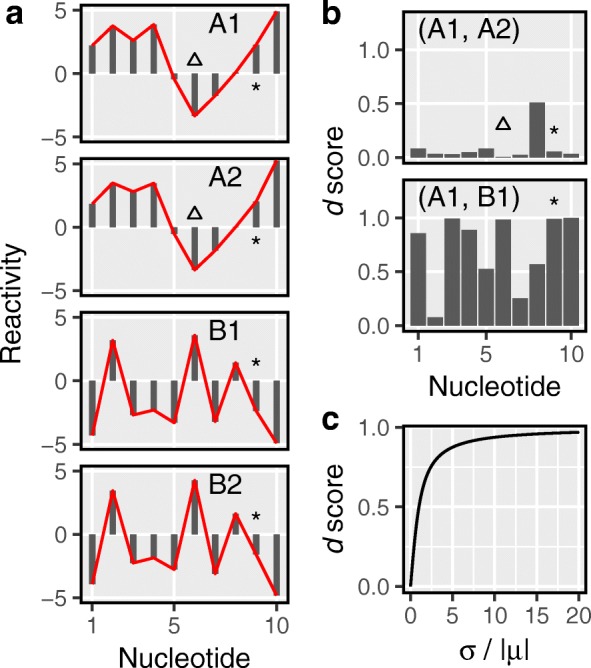Fig. 1.

The d score quantifies the dissimilarity between reactivities. a Four hypothetical reactivity profiles, labeled A1 and A2 (group A) and B1 and B2 (group B). Red lines highlight the reactivity patterns. Triangles mark a nucleotide that maintains identical reactivities within groups. Asterisks mark a nucleotide that flips its reactivity between groups. b Comparison of samples from the same group (e.g., A1, A2) results in d scores lower than those from between-group comparisons (e.g., A1, B1). A triangle highlights the low d score of a nucleotide with high within-group agreement. An asterisk highlights a nucleotide that displays high within-group agreement and therefore results in a low within-group d score. It also displays poor between-group agreement, which results in a high between-group d score. c The d score monotonically increases with the absolute value of coefficient of variation
